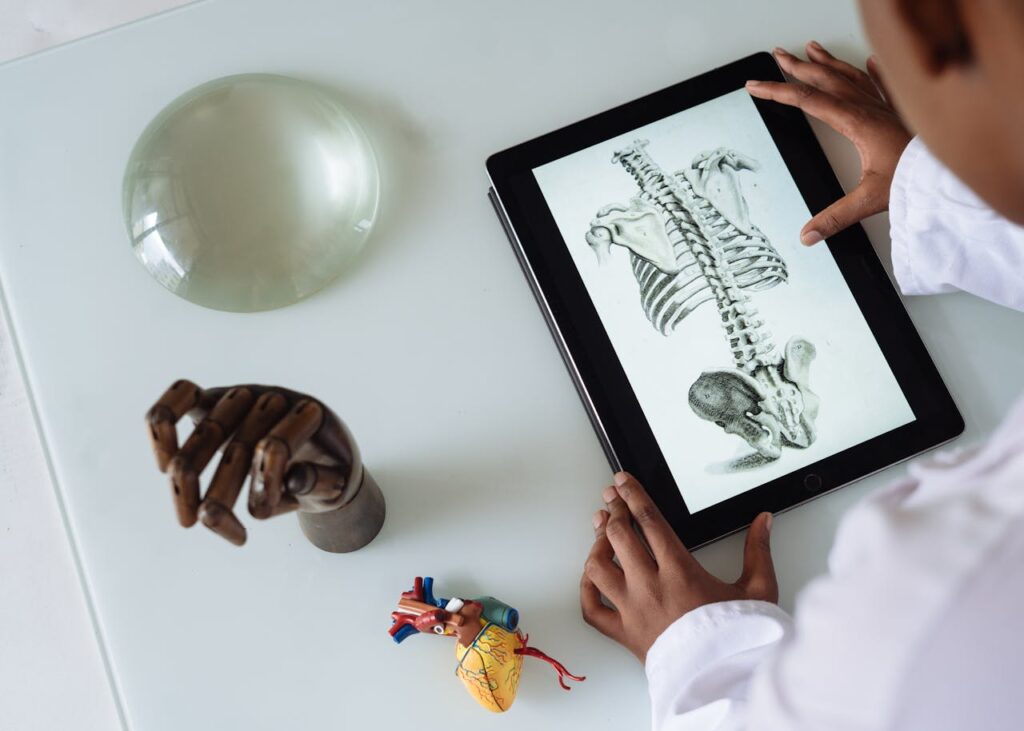Mastering the Medical Licensing Exam: Strategies for USMLE Excellence
This website may earn a commission if you make a purchase after clicking on a product link in this article
The journey to become a licensed physician is a challenging yet rewarding pursuit that requires unwavering dedication, perseverance, and a deep-rooted passion for healing. At the heart of this noble endeavor lies the United States Medical Licensing Examination (USMLE), a rigorous series of exams that serve as a crucible, forging the knowledge, skills, and clinical acumen essential for providing exceptional patient care.
This comprehensive evaluation spans multiple stages. It is a testament to the commitment and resolve of aspiring medical professionals. It is a linchpin in the medical profession, ascertaining whether a medical graduate can effectively apply a depth of scientific understanding to real-world scenarios and navigate the complexities of clinical decision-making.
The USMLE consists of the following steps, each representing a milestone in the journey towards becoming a licensed practitioner:
Step 1: Evaluating Foundational Medical Sciences
Step 2: Assessing Theoretical and Clinical Knowledge
Step 3: The Culminating Assessment of Independent Clinical Decision-Making
These challenging examinations are designed to assess not only a candidate’s mastery of medical knowledge but also their ability to apply that knowledge in practical, clinical settings. From the foundational sciences that lay the groundwork for diagnosis and treatment, to the nuances of evidence-based practice and patient-centered care, the USMLE demands a comprehensive understanding of the art and science of medicine.
As you embark on this journey, it is essential to approach each step with a strategic mindset, leveraging effective study techniques, practice resources, and test-taking strategies. This guide serves as a comprehensive roadmap, offering insights into the structure and content of each exam, as well as proven methods for maximizing your preparation and performance.
Mastering Step 1: Building a Solid Foundation for Future Physicians
The USMLE Step 1 is a critical milestone in a medical student’s career, focusing on the foundational sciences underpinning medical practice. This includes disciplines like anatomy, biochemistry, pharmacology, and pathology, among others. The exam tests not just rote memorization but the ability to apply this knowledge in problem-solving to ensure a solid basis for the next stages of medical education and patient care. The Step 1 is renowned for its rigor, requiring extensive preparation and a deep understanding of both the content and the test’s structure. Here’s how to navigate it:
Eligibility and Registration: Your journey begins with ensuring you’re eligible—typically, medical students who’ve completed their basic science courses. Registration is straightforward but requires attention to detail. Check the specific criteria and deadlines on the official USMLE website.
Exam Structure and Content: The test challenges you with a broad spectrum of questions covering anatomy, biochemistry, pharmacology, and more, designed to assess your ability to apply scientific knowledge in a practical, medical context. It’s a one-day, eight-hour examination that demands both stamina and comprehensive knowledge.
Study Strategies and Resources: Success lies in a balanced approach to study materials, from textbooks and online resources to question banks and mock exams. Tailor your study plan to your learning style, ensuring you cover all topics systematically. Engage with study groups and seek guidance from mentors who’ve excelled in the exam.
Scoring System: The scoring for Step 1 goes beyond merely passing; a higher score can significantly impact your residency applications. Understand that it reflects your ability to apply basic science knowledge critically, so aim for mastery rather than rote memorization.
By approaching the USMLE Step 1 with a structured plan and a commitment to understanding the core sciences deeply, you’re laying a solid foundation for your medical career.
Assessing Clinical Knowledge in Step 2
The USMLE Step 2 Clinical Knowledge (CK) exam evaluates a medical student’s ability to apply clinical science knowledge in patient care. This section of the USMLE focuses on the clinical aspects of medical training, requiring a deep understanding of both common and complex illnesses, their diagnosis, and initial management.
Understanding Clinical Knowledge: This involves grasping the practical applications of medical sciences in diagnosing and managing patients, emphasizing evidence-based medicine and patient-centered care.
Preparation Resources: Key resources include comprehensive review books, online courses, question banks specifically designed for Step 2 CK, and clinical case simulations to enhance diagnostic and management skills.
Timing and Scheduling the Exam: Ideal timing often depends on the individual’s readiness and the completion of clinical rotations, typically in the final year of medical school. Early registration is recommended to secure desired dates and locations.
Exam Content Areas: The exam covers internal medicine, obstetrics and gynecology, pediatrics, preventive medicine, psychiatry, surgery, and other areas relevant to the scope of practice of a general physician, testing both depth and breadth of knowledge.
Approaching Step 2 CK with a thorough understanding of clinical knowledge and a well-structured preparation plan is crucial for success.
Demonstrating Readiness for Independent Practice in Step 3
The USMLE Step 3, the final exam, assesses a candidate’s readiness for unsupervised medical practice by evaluating their ability to apply medical knowledge and manage patients. Eligibility is typically after the first residency year, reflecting its practical nature. The exam is divided into two parts over two days, emphasizing independent practice fundamentals and advanced clinical medicine. It includes Clinical Case Simulations (CCS) to assess decision-making skills. Preparation involves comprehensive study and practice with clinical cases, timed to coincide with peak readiness before the exam.
Eligibility During Residency: Typically, candidates are eligible for Step 3 after completing the first year of residency, underscoring its focus on practical, patient-centered skills.
Two-Day Exam Breakdown: The exam spans two days, with the first day covering Foundations of Independent Practice (FIP), focusing on medical knowledge, understanding of biomedical and clinical science, and the second day covering Advanced Clinical Medicine (ACM), emphasizing the application of knowledge in patient management.
Clinical Case Simulations (CCS): A unique feature of Step 3, these simulations test candidates’ ability to make patient management decisions in real-time, a critical aspect of independent medical practice.
Study Tips and Timing: Effective preparation involves a balanced review of clinical knowledge, practice with case simulations, and timing your study to peak as you approach your exam date. Utilizing a variety of resources, including question banks and simulation software, can enhance readiness.
Comprehensive Strategies for USMLE Success
Preparing for the USMLE requires a strategic and organized approach to ensure comprehensive coverage of the extensive material and optimal performance on test day. By implementing effective study schedules, leveraging practice exams, and employing sound test-taking strategies, you can maximize your chances of success on this crucial examination. The following tips provide a comprehensive framework to guide your USMLE preparation journey, enabling you to build confidence, reinforce your knowledge, and ultimately achieve your desired outcome.
Study schedules: Creating a good study schedule for the USMLE involves dividing your study materials into manageable sections and assigning them to specific days, ensuring all topics are thoroughly covered. Incorporate regular breaks to prevent burnout and promote information retention. Start with subjects or areas where you feel less confident to give yourself time to improve, and closer to the exam date, review stronger areas to reinforce knowledge. Including practice exams in your schedule is essential for assessing progress and familiarizing yourself with the exam format.
Practice exams: Leveraging practice exams effectively involves using them to simulate actual test conditions, timing yourself as you would be during the real exam to build endurance and familiarity with the exam’s pace. Reviewing answers, both correct and incorrect, helps in understanding rationales and identifying areas needing improvement. Integrating practice exams into your study schedule regularly can track progress and adjust study strategies as needed.
Test-taking strategies: Good test-taking strategies include carefully reading questions and all answer choices before responding, managing time effectively to ensure all questions are addressed, using the process of elimination for multiple-choice questions, and staying calm to maintain focus. Additionally, practicing mindfulness or stress-reduction techniques before the exam can help improve concentration and performance.
Conclusion
The path to becoming a licensed medical professional is arduous, but the USMLE serves as a crucial gateway, ensuring that only those with the requisite knowledge, skills, and dedication are granted the privilege of practicing medicine. Embrace the challenge of the USMLE as an opportunity to solidify your understanding, refine your clinical acumen, and ultimately emerge as a well-rounded healthcare provider. Remember, success on these exams is not merely a reflection of your academic prowess but also a testament to your commitment to patient care and your ability to navigate complex medical scenarios with poise and professionalism. By diligently following the strategies outlined in this guide, you will be well-equipped to conquer the USMLE and take a significant stride towards realizing your aspirations in the noble field of medicine. Approach each step with unwavering determination, resilience, and a deep-rooted passion for healing, and you will undoubtedly emerge triumphant in this critical endeavor.
Questions or feedback? Email editor@noodle.com
Categorized as: General

